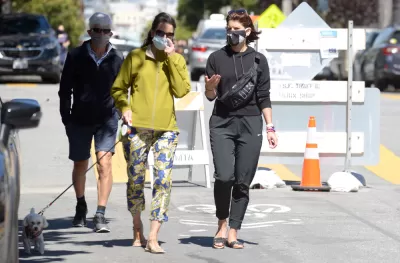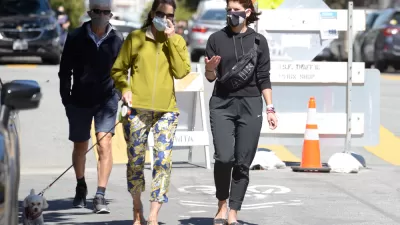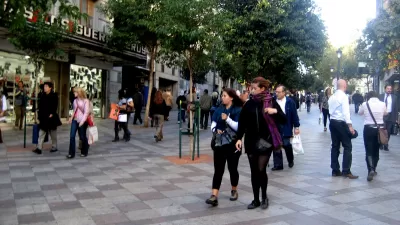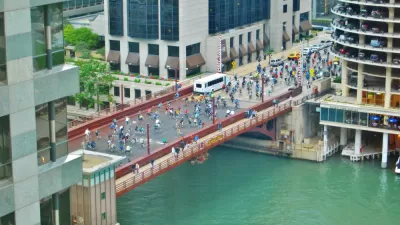Lake Street’s designation as a ‘slow street’ is overwhelmingly popular with residents. Why does the city plan to dismantle it?

Despite having support from more than 80 percent of respondents to a city survey, San Francisco officials plan to dismantle one of its remaining ‘slow streets.’ “It’s unclear why the city made this decision after it worked so hard to confirm that a clear majority of people in the area wanted to keep the street unavailable for cut-through traffic,” writes Roger Rudick in Streetsblog San Francisco.
Over the last two years, since Lake Street’s initial closure to through traffic, the city has solicited several rounds of public input, during which only a small minority objected to the closure. Yet the city is canceling plans to install concrete diverters and plans to remove existing slow street infrastructure. Advocates say the move is in blatant opposition to the city’s stated Vision Zero goals, as “traffic deaths and serious injuries in San Francisco just keep getting worse because the city signs pledges and makes promises but then backs off nearly all concrete action to make streets safer.”
In May, CBS Bay Area reported on San Francisco’s slow streets program. At that time, four of the city’s nearly 30 slow streets were approved to stay in place, including Lake St.
FULL STORY: S.F. Trashes Outreach, Kills Slow Lake St.

Maui's Vacation Rental Debate Turns Ugly
Verbal attacks, misinformation campaigns and fistfights plague a high-stakes debate to convert thousands of vacation rentals into long-term housing.

Planetizen Federal Action Tracker
A weekly monitor of how Trump’s orders and actions are impacting planners and planning in America.

Chicago’s Ghost Rails
Just beneath the surface of the modern city lie the remnants of its expansive early 20th-century streetcar system.

Bend, Oregon Zoning Reforms Prioritize Small-Scale Housing
The city altered its zoning code to allow multi-family housing and eliminated parking mandates citywide.

Amtrak Cutting Jobs, Funding to High-Speed Rail
The agency plans to cut 10 percent of its workforce and has confirmed it will not fund new high-speed rail projects.

LA Denies Basic Services to Unhoused Residents
The city has repeatedly failed to respond to requests for trash pickup at encampment sites, and eliminated a program that provided mobile showers and toilets.
Urban Design for Planners 1: Software Tools
This six-course series explores essential urban design concepts using open source software and equips planners with the tools they need to participate fully in the urban design process.
Planning for Universal Design
Learn the tools for implementing Universal Design in planning regulations.
planning NEXT
Appalachian Highlands Housing Partners
Mpact (founded as Rail~Volution)
City of Camden Redevelopment Agency
City of Astoria
City of Portland
City of Laramie





























